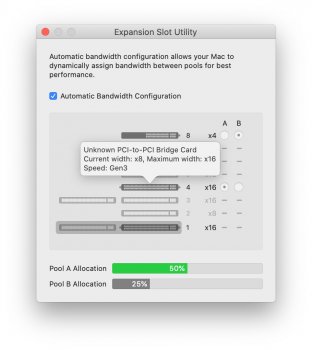I don't know if any of the support documents mentioned it, but when I try booting up a Mac Pro with only a 3rd party graphics card (Vega 64), it won't give me any display signals. The only way I can get a proper display is with RX580X module installed. The MPX module itself is not connected to any monitors, and when I do check "About this Mac", I get Vega 64 (which is connected to a monitor) as the graphics card.
Is this an intended behavior? If not, where should I start looking?
On a side note, though Vega 64 is on a supported GPUs list, Expansion Slot Utility seems to be having trouble identifying it. It tells me current width of PCIe is only x8, when it is x16. System Report does give me x16 for the Vega, so I'm assuming it's just the utility having an issue. It didn't occur with a 3rd party RX580 card.
Is this an intended behavior? If not, where should I start looking?
On a side note, though Vega 64 is on a supported GPUs list, Expansion Slot Utility seems to be having trouble identifying it. It tells me current width of PCIe is only x8, when it is x16. System Report does give me x16 for the Vega, so I'm assuming it's just the utility having an issue. It didn't occur with a 3rd party RX580 card.


